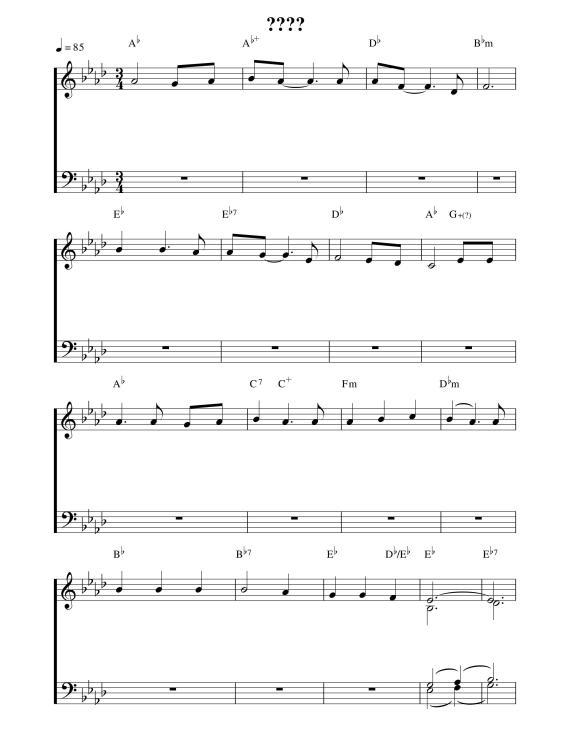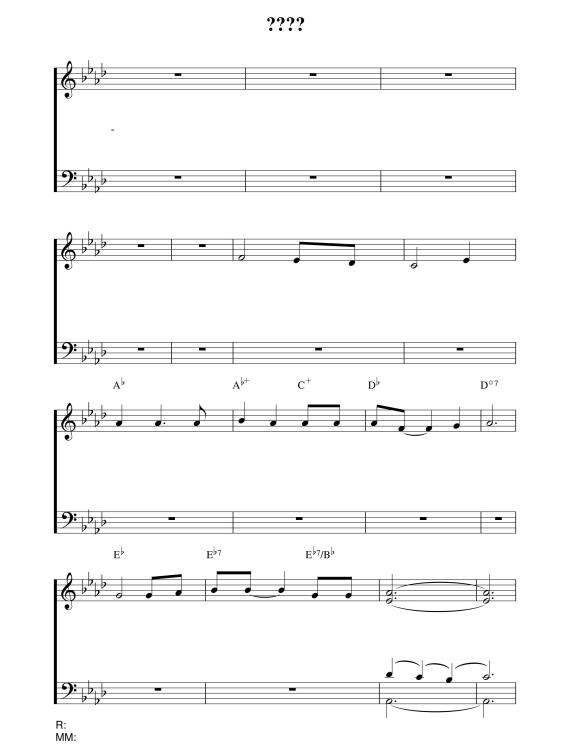All Activity
- Past hour
-
Henry Ng Tsz Kiu started following The Trek
- Today
-

Should I start with traditional tonality?
mahler2009 replied to mahler2009's topic in Composers' Headquarters
While don’t like to use too many labels, I would say I personally gravitate towards music that has a rich use of rather coloristic harmony, with a strong feel for natural resonance, strong formal logic and internal coherence, as well as a sense of direction. I think of music often in terms of space: my ideal music opens up spaces and dimensions that the listener may not have foreseen, while remaining colorful and somewhat transparent. My biggest inspirations musically are probably Messiaen, Beethoven, Wagner, Debussy, and Scriabin (not to mention Grisey, Saariaho, and late Boulez). Because of my interest in tonal space and acoustics, I like to utilize geometrical lattices of tonal space, and much of my musical understanding is shaped by them. I think that’s good advice: keep building technique, but also attempt to compose the music you want to compose on the side. I’m excited to undertake this journey of developing my personal voice, thanks for the encouragement! And I do tend to be quite critical of my own compositional attempts: but the great thing about posting for others to evaluate is they’ll provide constructive criticism, and real feedback for improvement. That’s something I can’t do on my own! -
.thumb.png.1e2763f479362bbb522da50d31ef2e50.png)
2025 Christmas Music Event!
therealAJGS replied to PeterthePapercomPoser's topic in Monthly Competitions
I'm withdrawing my participation. Competition or not, if you're putting on essentially a display of music created by members and also giving out site badges for them, then I feel that music should actually be created and produced by the members of the forum. I want my music alongside other human-created works. I'm sorry Mike, but you guys folded like a cheap suit in a matter of minutes. You give these AI bros an inch and they'll take 3 miles. What is to say you won't fold the same when it's not "just for fun?" Aren't all of these "just for fun" in some way? And people will bring up that "Well you accepted AI that time!" Is this a place for composers, or a place for grifters passing off AI music? I'm sorry Mike, but you guys folded like a cheap suit in a matter of minutes. You give these AI bros an inch and they'll take 3 miles. What is to say you won't fold the same when it's not "just for fun?" Aren't all of these "just for fun" in some way? And people will bring up that "Well you accepted AI that time!" Is this a place for composers, or a place for grifters passing off AI music? Also something else I need to say about this: So I, and others, can put in hours of work writing the music, orchestration, making detailed mockups, etc. but a guy who writes a Suno prompt and has a "piece" in 5 minutes is treated as equally-valid in this event? It isn't actually even his music. Where is the "fun" in that, exactly? Why even bother? You guys say you want more people to do reviews. What your reviews are going to become if this kind of thing is permitted is a bunch of people being like "Nice prompt bro, but I would've said 'romantic soaring strings' instead of 'cinematic'". Also something else I need to say about this: So I, and others, can put in hours of work writing the music, orchestration, making detailed mockups, etc. but a guy who writes a Suno prompt and has a "piece" in 5 minutes is treated as equally-valid in this event? It isn't actually even his music. Where is the "fun" in that, exactly? Why even bother? You guys say you want more people to do reviews. What your reviews are going to become if this kind of thing is permitted is a bunch of people being like "Nice prompt bro, but I would've said 'romantic soaring strings' instead of 'cinematic'". Yeah no; sorry if I'm a bit late, but if someone makes their song out of AI I agree that they should be disqualified, but I feel like withdrawing your participation is a bit too far. for me one of my my favorite parts about writing a piece is that you get to pick out the order that the notes go and to choose what notes go where. I feel like if you give an AI the key, mood, and length of the song but you don't make it your self, there's just not enough creativity. I too, have made an AI song and posted it on here, but that was just for fun, and it certainly wasn't for a competition. I also told the AI to give me the notes and I put them myself and that was just to see if AI could really make a song. I think it's fine, just this once but I do not think AI-made/assisted pieces should be allowed in competitions anymore. -

Should I start with traditional tonality?
mahler2009 replied to mahler2009's topic in Composers' Headquarters
Hey everyone, thanks for your thoughtful and prompt advice! I’m glad to be a part of YC after following it for over a year 😃 I’m completely self-taught in music theory, and I’ve been studying piano for over four years. I feel like I’ve spent a lot of time reading music theory books (Schoenberg, Messiaen, Hindemith), and far too little time actually completing exercises and sketching ideas. Nothing can replace actual composing! But my technique still has a long way to go. As soon as I’ve composed something I’m half-satisfied with, I’ll make sure to post it on YC! Thanks Vince! I agree with you on that: traditional tonality is much easier to handle for a composer in an early stage. But could it be an option to sketch ideas in more adventurous styles alongside my harmony studies, even if they’re not great, so I don’t lose sight of my personal voice (not to mention my motivation: diatonic tonality really doesn’t excite me to be honest)? -
PeterthePapercomPoser started following Getting a head start.
-

Should I start with traditional tonality?
Omicronrg9 replied to mahler2009's topic in Composers' Headquarters
Welcome to the forums, Mahler2009! I agree with my colleagues here dude. Get more into tonal harmony + whatever piques your interest. Keep composing, this is a discipline that's best learnt by practice, trial an error. Getting your own voice may be difficult but if you are resilient, disciplined and constant, you'll achieve it. Your first works may or may not hint you where you want to go. Be curious, experiment, come back, go forward. Feel free to share them with us, we won't go hard (not much, I hope 🥶) ! Best regards, Daniel–Ø. -

Should I start with traditional tonality?
Henry Ng Tsz Kiu replied to mahler2009's topic in Composers' Headquarters
Hello @mahler2009, Welcome to the forum! I couldn't agree more with @Thatguy v2.0. What is the idioms you want to express with? Henry -
For me, Theory workbook only works after you have some of the Masterpieces in your mind already. I have to know the soul of the works first before trying to learn their craft. Otherwise it's just meaningless to learn the craft and it's better to not compose anything at all.
-
Henry Ng Tsz Kiu started following Should I start with traditional tonality? and Getting a head start.
-
Fullness with SATB Writing
muchen_ replied to BlackkBeethoven's topic in Incomplete Works; Writer's Block and Suggestions
Can you elaborate and define what you mean by "fullness"? - Yesterday
-
Kvothe started following Should I start with traditional tonality?
-

Should I start with traditional tonality?
Kvothe replied to mahler2009's topic in Composers' Headquarters
Hi Matthew. Here's my answer: It is easier to start with tonal harmony vs modern harmony. It is probably better start with tonal, traditional harmony so you can understand modern harmony change that. -
Henry Ng Tsz Kiu started following Fullness with SATB Writing
-
Kvothe started following Getting a head start.
-
My general advice for those who want to learn the craft--and this will sound cliche--is to start at the beginning. This is known as theory. Most harmony books cover basics first(meter, intervals, etc). But I think, it is best to jump start on those topics by either learning an instrument or self-study. Each of their benefits. When I learned theory, it was through my piano lessons. Teachers either use Alfred or Faber or Faber. Both have theory work book. The theory workbook expands on lessons and provides exercise to train you. So let us say you were learning about 3/4 in a lesson. The theory book would go more in depth and other books that cover aspect of the lesson. The second option is self taught. Alfred has music theory book: Alfred's Essentials of Music Theory: A Complete Self-Study Course for All Musicians (Book & 2 CDs): Surmani, Andrew, Surmani, Karen Farnum, Manus, Morton: 0038081232973: Amazon.com: Books Getting ahead of start on this place you ahead of the class. You can probably skip the chapters on theory and go to next part...counterpoint.
- 1 reply
-
- 1
-

-

Should I start with traditional tonality?
Thatguy v2.0 replied to mahler2009's topic in Composers' Headquarters
Hey there Matthew, Do you have a teacher? Or do you study music on your own with online course guidance? My opinion is do what you want, learn what interests you, but I think it's really advantageous to continue with tonal harmony. When you learn why tonality broke down, it helps with understanding the motives atonal music is trying to achieve. Also, post your music if you haven't already! That'll really help with your growth, as even strangers on the internet can provide a wealth of knowledge. Cheers buddy -

Fullness with SATB Writing
Kvothe replied to BlackkBeethoven's topic in Incomplete Works; Writer's Block and Suggestions
HI @BlackkBeethoven My advice is using the given melody with harmony is: 1. Create bass line 2. Fill in the middle parts 3. add figurations. -
.thumb.png.8b5b433a341551e913a34392660bc95b.png)
2025 Christmas Music Event!
PeterthePapercomPoser replied to PeterthePapercomPoser's topic in Monthly Competitions
Here is @Musicman_3254's submission: -
Not really sure which thread to put this in, so I'm posting here 😅 I do a lot of arranging of SATB hymns, and I'm really wanting to get more "fullness" in my writing. I've taken 3.5 years of college music theory so far, so I know the rules, but I'm struggling to find that fullness I'm looking for. A good example of this might be, "Abide in Me". I've attached an excerpt from something in currently working on arranging so I could maybe get some feedback on how to get some fullness. Thanks in advance!
-
Yes! His hand span is larger than mine. I can play Maj 9th in the RH. Prelude in C# minor--I do not remember the opus number--doable. But I would never recommend it for beginner. What did you think of the second version? executive choices: 1. Made it more accessible for all levels. 2. Keep the dynamic level same until the end: a slow fade out. 3. I could not find a way does not make the tonic to be heard. I do appreciate the feedback on this piece. 🙂 Kvothe.
-
mahler2009 changed their profile photo
-
I’m a 16-year-old trying to become a composer, and I’m pretty much new to this forum! I really want to express myself in more modernist idioms, but I’m still developing my technique. Right now I’m working on a traditional harmony course, and I’m at the point of cadences and simple modulations. I’ve composed several tonal pieces, including a mazurka, a sonata movement, and a late-romantic waltz. I guess my question is whether I should compose many more “traditionally tonal” pieces before moving to the idioms that excite me more? If so, when is the point when I can move to non-functional harmony? Or can I just study traditional harmony on the side, but try to compose more modern-sounding music? I have already been doing this to a certain extent (my late-romantic waltz). Thanks for any suggestions! —Matthew
-
soothingsoul joined the community
-
I dont consider popular composers to be underrated. For symphonic works composers like George Lloyd, Malcom Arnold, Vagn Holmboe and Eduard Tubin are amazing great modern symphonists that dont get enough love but they do have a following, they just dont have the mainstream they deserve. Heitor Villa-Lobos is an amazing symphonist. Alfredo Casella is very underrated and so is Arnold Bax. Walton, Delius, there is plenty of composers out there that are great yet not mainstream, kind of obscure. For more solo and chamber/concertante music you've got the amazing Samuil Feinberg. But for my actual list i will list actual obscure composers 1.Alun Hoddinott - Not the best melodist for sure, the music is pretty unstructured, but interesting nonetheless. 2.Aubert Lemeland - A modern French conservative who is worth checking. 3.Eric Chisholm. 4.Carl Vine. 5.Viktor Kosenko. Most overrated composers 1.Hans Zimmer - Good for impressionable people who didnt expand their taste. 2.Ludovico Einaudi - Just no. 3.Sergei Rachmaninoff - I just have never really felt the music. Mainly the orchestral stuff. The solo stuff is the only thing i remotely like. I can't think of more. Anyone who claims Brahms never innovated doesnt know a single thing about Classical music or Brahms either.
- 48 replies
-
- composer
- underrated
-
(and 1 more)
Tagged with:





